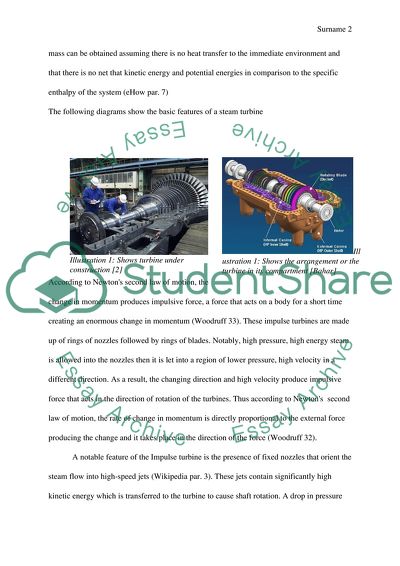Cite this document
(Types of Forces and Newton's Laws of Motion in a Steam Turbine Essay Example | Topics and Well Written Essays - 1250 words, n.d.)
Types of Forces and Newton's Laws of Motion in a Steam Turbine Essay Example | Topics and Well Written Essays - 1250 words. https://studentshare.org/physics/1849349-physics-of-forces-and-types-of-forces-in-the-mechaincal-energy-and-thermal-energy-involved-including-why-and-how-newtons-laws-are-in-and-satisfied-in-the-operation-of-a-steam-turbine-pump
Types of Forces and Newton's Laws of Motion in a Steam Turbine Essay Example | Topics and Well Written Essays - 1250 words. https://studentshare.org/physics/1849349-physics-of-forces-and-types-of-forces-in-the-mechaincal-energy-and-thermal-energy-involved-including-why-and-how-newtons-laws-are-in-and-satisfied-in-the-operation-of-a-steam-turbine-pump
(Types of Forces and Newton'S Laws of Motion in a Steam Turbine Essay Example | Topics and Well Written Essays - 1250 Words)
Types of Forces and Newton'S Laws of Motion in a Steam Turbine Essay Example | Topics and Well Written Essays - 1250 Words. https://studentshare.org/physics/1849349-physics-of-forces-and-types-of-forces-in-the-mechaincal-energy-and-thermal-energy-involved-including-why-and-how-newtons-laws-are-in-and-satisfied-in-the-operation-of-a-steam-turbine-pump.
Types of Forces and Newton'S Laws of Motion in a Steam Turbine Essay Example | Topics and Well Written Essays - 1250 Words. https://studentshare.org/physics/1849349-physics-of-forces-and-types-of-forces-in-the-mechaincal-energy-and-thermal-energy-involved-including-why-and-how-newtons-laws-are-in-and-satisfied-in-the-operation-of-a-steam-turbine-pump.
“Types of Forces and Newton'S Laws of Motion in a Steam Turbine Essay Example | Topics and Well Written Essays - 1250 Words”. https://studentshare.org/physics/1849349-physics-of-forces-and-types-of-forces-in-the-mechaincal-energy-and-thermal-energy-involved-including-why-and-how-newtons-laws-are-in-and-satisfied-in-the-operation-of-a-steam-turbine-pump.


